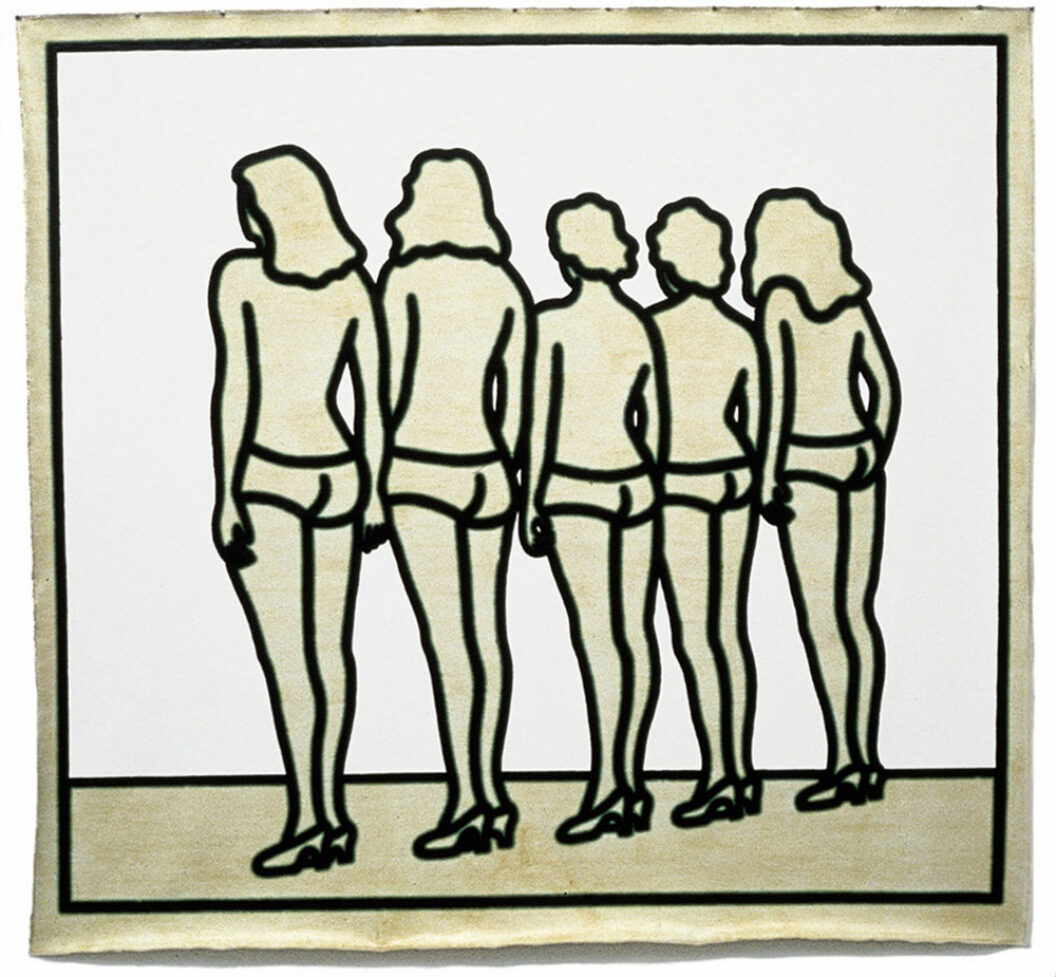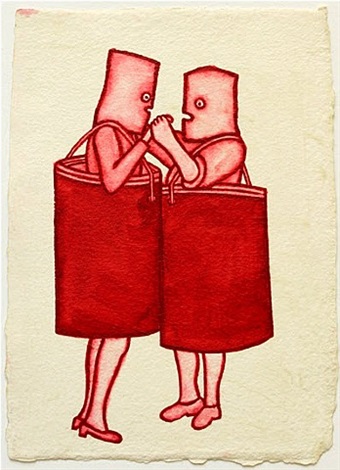Ida Applebroog is an American artist that works out of New York. Her works uses lots of line and contour drawings. She is talented in many creative mediums including jewelry making, sculpture, film, painting, and artists' books. She was born in 1929. The era that she grew up in wasn't so open or friendly to women designers and artists, so she forged her own way. Perhaps from her experiences in the industry, she tends to explore themes about gender and sexual identity. She is a feminist and a social activist- even so, she moved around the country to support her husband's career and schooling. This led to many different opportunities to explore art in different ways. Her art is very distinct and has a very graphic design quality about it- which was her major in college. She has 4 children, which amazes me when I read how prolific she was with creating art during their formative years. I guess I'm in school right now and producing art, but the things she did seem so overwhelming to me to do while raising children. I would love to have that kind of drive and energy. She was hospitalized at one point for depression - which shows that maybe it wasn't as easy for her as it seemed as I read about her work output. She continues to put out work that is political and feminist, questioning social norms and gender identity, focusing on the woman.
When my teacher was introducing some of the artists that we could research, he mentioned Andrew Wyeth. For some reason, that name sounded super familiar and he was listed under the category of NARRATIVE figurative artists. When I looked up his work, I realized his name was familiar because I've seen many of his works. The painting of a dog on a bed, entitled Master Bedroom , is one I've seen many times because a print of it hangs over the headboard in my in-law's bedroom. Master Bedroom (1965) Andrew Wyeth Andrew Wyeth lived in the Northeast, and his family was very wealthy. His granddaughter, Victoria, reminisced in an article in VOGUE about how they would go to their families private island every summer ( article ). His father was a famous artist, N.C. Wyeth, he largely painted illustrations for books and magazines. Because of his father's fame, Andrew was able to come in contact with many famous creatives of the day like F. Scott Fitzgerald and Mary Pickford. ...


Comments
Post a Comment